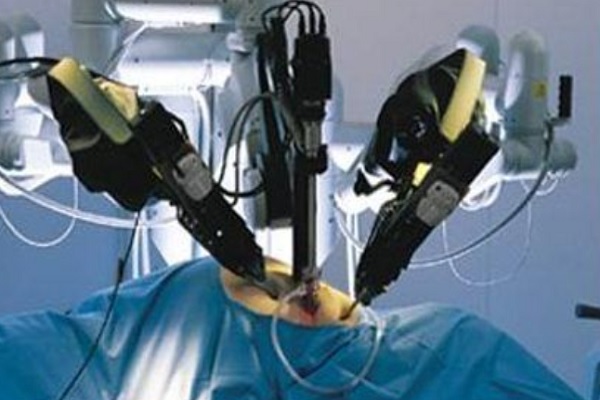While there was plenty of VR news going on at this time the biggest part of this year was taken up with VR gaming and the big names getting behind it. We have to start with Sega VR and their headset prototype that had head tracking and wrap-around stereo sound and LCD screens.

Sega intended to release the product at a price point of about $200 in 1993. However, because of technical difficulties, the device remained in the prototype phase despite four games being developed for it. Planned as an add-on peripheral for the Sega Genesis and only publicly showcased at a number of trade shows and expositions, its release was postponed and later cancelled outright after Sega ran into development issues. At least four in-progress games for the hardware were in development before its cancellation.
The project was largely driven by Sega of America; a more successful, separate, and officially released attempt at a virtual reality headset, the Mega Visor Display, was overseen by Sega’s Japanese amusement divisions and United Kingdom-based collaborators Virtuality, and would be used in the VR-1 theme park ride and the Dennou Senki Net Merc arcade game. The similarly titled VR-1 is not to be confused with the Sega VR.

In this same year, there were talks about bringing Virtuality to Atari’s Jaguar games console, launched in 1993, but they fell through. Unlike the bulkier Virtuality systems, Atari’s system was much better, with a lighter headset, better price point and big-name games. There were in fact two models, a blue and grey high-resolution unit, and a red and grey low-resolution unit.
So what happened? Well, after Atari merged with JTS in 1996 most of the headsets were sadly destroyed because it was deemed too much of a high-risk investment for JTS to carry on with. But in true gaming legends, there was said to be only two working units known to be left in existence. Released with Missile Command 3D Atari VR was close to bringing virtual reality gaming to the living room.

In the meanwhile, id Software introduced DOOM, which defined the game genre known as the first-person shooter and established competitive multiplayer gaming as the leading-edge category of games on personal computers. The programming team, led by John Carmack, took advantage of accelerated 3-D graphics hardware to enable rapid movement through an open virtual space as seen from the perspective of each player. DOOM’s fast peer-to-peer networking was perfect for multiplayer gaming, and id’s John Romero devised the “death match” as a mode of fast, violent, and competitive gameplay.
The U.S. military also adapted the first-person shooter for training purposes, beginning with a modified version of DOOM, known as Marine Doom, used by the Marine Corps and leading to the adoption of the Unreal game engine for the U.S. Army’s official game, America’s Army (2002), developed by the Modeling, Simulation, and Virtual Environments Institute of the Naval Postgraduate School in Monterey, California. First-person shooters, squad-based tactical games, and real-time strategy games are now routinely developed in parallel military and commercial versions, and these immersive, interactive, real-time training simulations have become a form of mainstream entertainment. While this isn’t really VR related news at the time the fact that Carmack was deep in the same industry does go to show why he would later be appointed as Consulting CTO to Oculus VR. But getting back into the world of VR…
Virtual reality was also extended to surgery through the technology of telepresence, the use of robotic devices controlled remotely through mediated sensory feedback to perform a task. The foundation for virtual surgery was the expansion during the 1970s and ’80s of microsurgery and other less invasive forms of surgery. By the late 1980s, micro-cameras attached to endoscopic devices relayed images that could be shared among a group of surgeons looking at one or more monitors, often in diverse locations. In 1993, a DARPA initiative funded research to develop telepresence workstations for surgical procedures.

This was Sutherland’s “window into a virtual world,” with the added dimension of a level of sensory feedback that could match a surgeon’s fine motor control and hand-eye coordination. The first telesurgery equipment was developed at SRI International in 1993; the first robotic surgery was performed in 1998 at the Broussais Hospital in Paris.
The uses of robotics in surgery were hypothesized as far back as 1967, but it took nearly 30 years and the nation’s largest agency, the Department of Defense, in conjunction with innovative startups and established research agencies to complete the first fully functional multipurpose surgical robot. Currently, the most prominently available multipurpose robotic surgery system with US Food and Drug Administration approval is Intuitive Surgical Inc.’s da Vinci Surgical System, which is found in operating rooms across the globe. Although now ubiquitous for minimally invasive surgery, early surgical robot prototypes were speciality-focused. Originally, multipurpose robotic systems were intended for long-distance trauma surgery in battlefield settings. While there were impressive feats of telesurgery, the marketable focus has veered from this goal. Initially developed through SRI International and Defense Advanced Research Projects Agency, surgical robotics reached private industry through two major competitors, who later merged.

It wasn’t just America making VR games and applications. Over in Tokyo things were about to get a lot colder. An old saying about skiing is “The only thing better than skiing is not skiing.” And that’s exactly what these two wise engineers at NEC in Tokyo are seen doing in this candid 1993 photo. Through assiduous research, NEC product development discovered that with virtual skiing with no snow it was still possible to have a lot of fun.
But it wasn’t just the virtual snow that was cooling people down. By the beginning of 1993, VPL had closed its doors and pundits were beginning to write of the demise of virtual reality. Despite the collapse of efforts to market VR workstations in the configuration stabilized at VPL and NASA, virtual world augmented reality, and telepresence technologies were successfully launched
In 1993, Brenda Laurel added a chapter to her book Computers as Theatre entitled “Post-Virtual Reality: After the Hype is Over.” Atari scuttled the partnership with W Industries / Virtuality and merged with a hard drive manufacturer. The headset market as a whole began to collapse”. But yet…some companies were just warming up and were about to release their own VR headsets onto the market.


